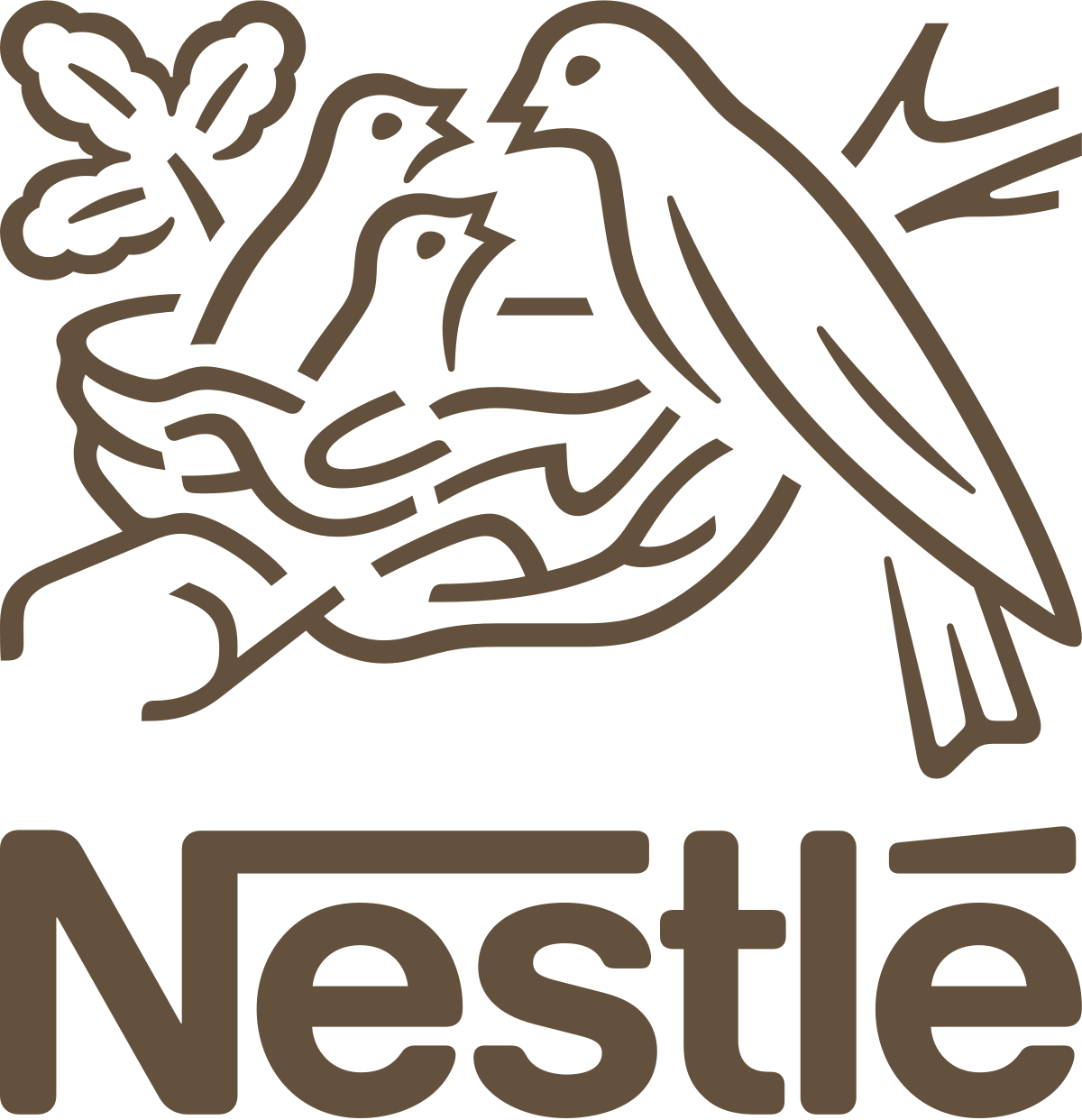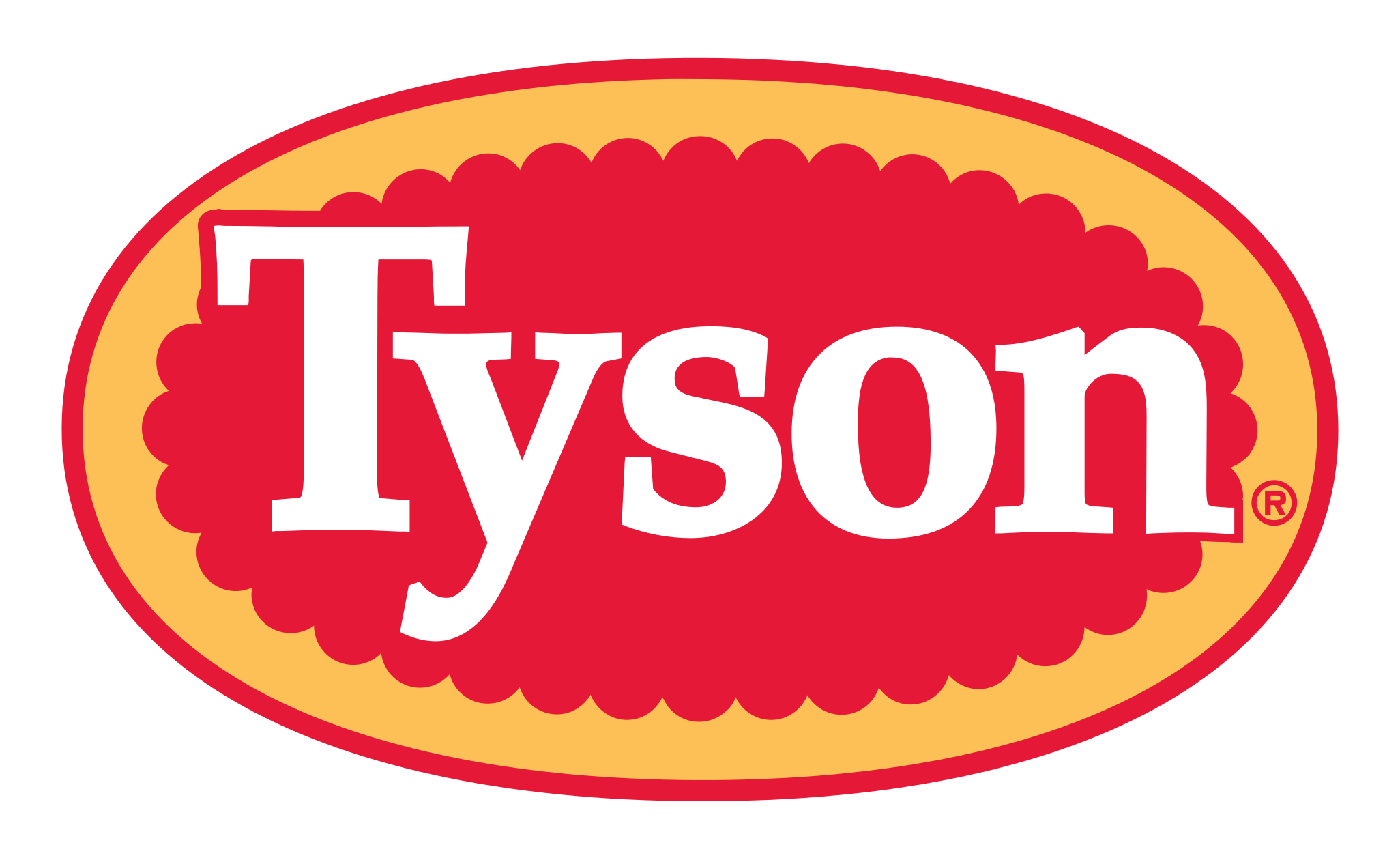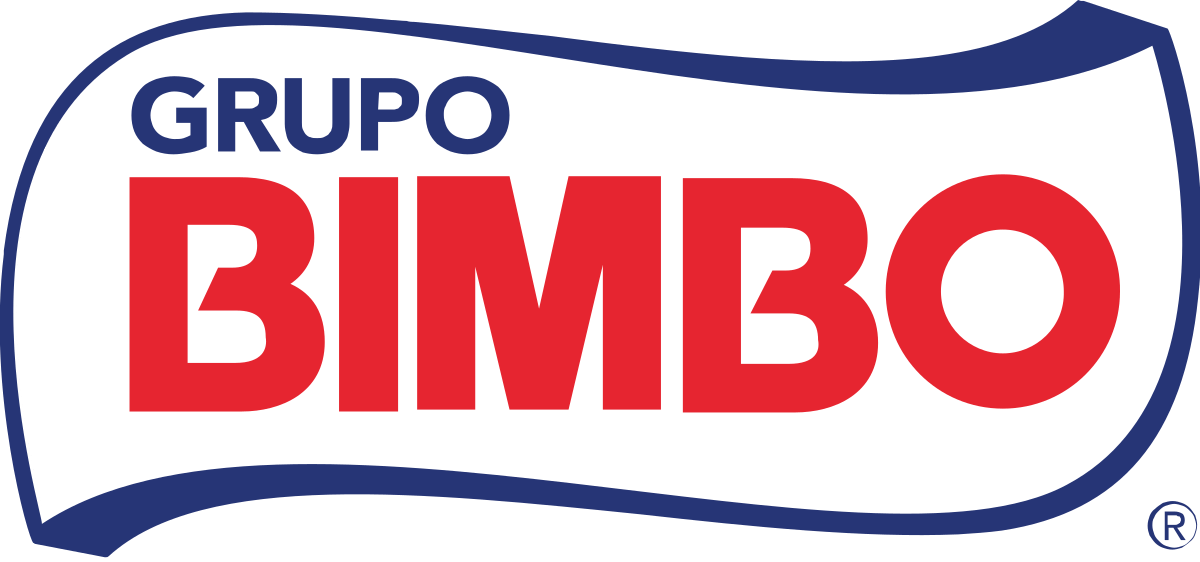Global Lab Grown Meat Market, By Source, By Application, By Distribution Channel, By Sales Channel, By Region & Segmental Insights Trends and Forecast, 2024 – 2034
- Industry: Food & Beverages
- Report ID: TNR-110-1084
- Number of Pages: 420
- Table/Charts : Yes
- May, 2024
- Base Year : 2024
- No. of Companies : 10+
- No. of Countries : 29
- Views : 10461
- Covid Impact Covered: Yes
- War Impact Covered: Yes
- Formats : PDF, Excel, PPT
In Terms of Revenue, the Global Lab Grown Meat Market was Worth US$ 156.5 Mn in 2023 and is Anticipated to Witness a CAGR of 22.5% During 2024 – 2034. The lab-grown meat market is rapidly evolving, driven by advancements in biotechnology and growing concerns over sustainability and animal welfare. Initially costly, production costs are decreasing, making lab-grown meat increasingly viable. Key segments include poultry, beef, pork, and seafood, with diverse products like burgers, sausages, and steaks.
Major markets are in North America, Europe, and Asia-Pacific, with companies like Aleph Farms and Memphis Meats leading the way. Despite challenges in consumer acceptance and regulatory frameworks, the market holds significant promise for reducing environmental impact and meeting the protein needs of a growing global population sustainably.
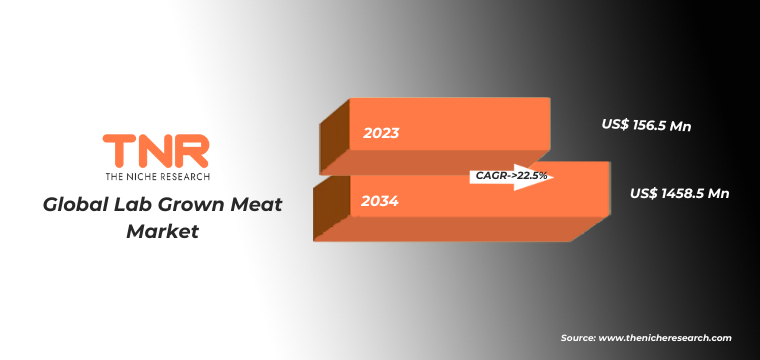
Lab Grown Meat Market Dynamic
Growth Driver-
Shifting Dietary Preferences
More people are becoming aware of the health risks associated with high consumption of conventional meat, such as cardiovascular diseases and certain cancers. Lab-grown meat, which can be engineered to have healthier nutritional profiles (e.g., lower fat content, no antibiotics), appeals to health-conscious consumers seeking better dietary choices. A growing number of consumers are concerned about the environmental impact of traditional meat production, including deforestation, water usage, and greenhouse gas emissions. Lab-grown meat offers a more sustainable alternative, aligning with the values of environmentally conscious consumers.
Trends-
Taste Tests and Public Trials
Taste tests encourage chefs and food innovators to experiment with lab-grown meat, leading to new recipes and culinary applications. This innovation can expand the market by offering unique and appealing dishes. Public trials offer transparency in production methods and ingredient sourcing, addressing health and safety concerns. Educating consumers about the benefits and safety of lab-grown meat can enhance trust and acceptance. Successful taste tests can help in meeting regulatory requirements by demonstrating product safety and consumer acceptance. Positive outcomes from these tests can support approval processes and market entry. Henceforth, these trends are supposed to stimulate the market over the forecast timeline.
Challenge-
High Production Costs
The cost of the nutrient-rich media used to culture cells is currently very high, making lab-grown meat expensive compared to conventional meat. Reducing these costs is essential for achieving price parity with traditional meat products. Scaling up from lab-scale to industrial-scale production involves significant technical challenges, including developing large bioreactors and efficient cell culture techniques. Building the necessary infrastructure to support large-scale production is capital-intensive and complex. Obtaining regulatory approval for lab-grown meat is a lengthy and rigorous process. Different countries have varying regulatory frameworks, adding complexity to global market entry. Ensuring compliance with food safety standards while maintaining efficiency is a critical challenge.

Lab Grown Meat Market Segmentation by Source, Application, Distribution Channel, Sales Channel and Region
The poultry segment is poised to assert its dominance in the lab grown meat market, boasting a substantial revenue share of 28.2% over the forecast period. This leadership is driven by several factors. Poultry, being a staple in diets worldwide, presents a vast market potential due to its high consumption rates. Additionally, advancements in lab-grown chicken production have led to improved taste, texture, and cost efficiency, making it more appealing to consumers. Poultry’s relatively lower production costs compared to other meats further bolster its market position. Moreover, growing health and environmental concerns are steering consumers towards sustainable and ethical alternatives, with lab-grown poultry emerging as a preferred choice. These factors collectively underpin the poultry segment’s projected market dominance.

The nuggets segment is anticipated as the fastest growing segment in the lab grown meat market, boasting a substantial revenue share of 24.2% over the forecast period. Nuggets are a popular and familiar product, making them an ideal entry point for consumers new to lab-grown meat. They also offer a convenient, versatile, and appealing option for both children and adults. Advances in production technology have improved the taste and texture of lab-grown nuggets, aligning closely with their conventional counterparts. Additionally, the demand for sustainable and ethically produced food options is rising, and lab-grown nuggets meet this need effectively, driving their increasing market share and popularity.

In 2023, North America is anticipated to play a significant role in propelling the growth of the lab grown meat market, contributing approximately 39.5% to its overall expansion. North America boasts a technologically advanced food industry, with a strong emphasis on innovation and sustainability. Moreover, the region has a large consumer base that is increasingly concerned about health, animal welfare, and environmental sustainability, creating a favorable market environment for lab-grown meat products. Additionally, supportive regulatory frameworks and growing investments in research and development further stimulate market growth. As consumer awareness and acceptance of lab-grown meat continue to increase, North America is poised to remain a prominent market for this innovative and sustainable food technology.
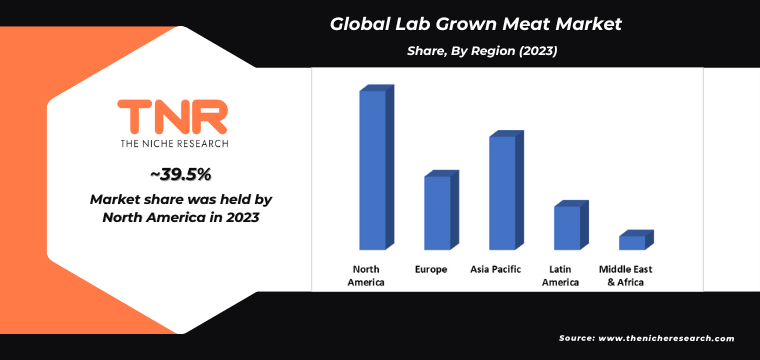
Key Developments
- In February 2019, multiple Israeli start-ups joined a select group of companies worldwide working on the development of lab-grown meat. They view this innovation as a potential solution to meet the increasing food demands of the world’s expanding population.
- In December 2018, Aleph Farms, an Israeli start-up founded in 2017, revealed its success in creating a lab-grown “minute steak” from bovine cells. This steak closely mimics the texture and flavor of conventional beef.
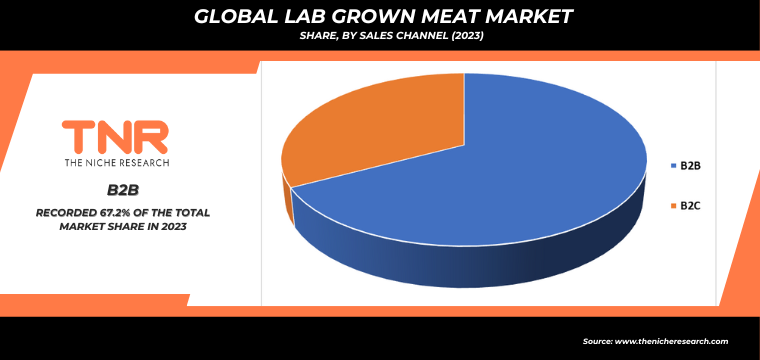
Global Lab Grown Meat Market Scope
| Report Specifications | Details |
| Market Revenue in 2023 | US$ 156.5 Mn |
| Market Size Forecast by 2034 | US$ 1458.5 Mn |
| Growth Rate (CAGR) | 22.5% |
| Historic Data | 2016 – 2022 |
| Base Year for Estimation | 2023 |
| Forecast Period | 2024 – 2034 |
| Report Inclusions | Market Size & Estimates, Market Dynamics, Competitive Scenario, Trends, Growth Factors, Market Determinants, Key Investment Segmentation, Product/Service/Solutions Benchmarking |
| Segments Covered | By Source, By Application, By Distribution Channel, By Sales Channel |
| Regions Covered | North America, Europe, Asia Pacific, Middle East & Africa, Latin America |
| Countries Covered | U.S., Canada, Mexico, Rest of North America, France, The UK, Spain, Germany, Italy, Nordic Countries (Denmark, Finland, Iceland, Sweden, Norway), Benelux Union (Belgium, The Netherlands, Luxembourg), Rest of Europe, China, Japan, India, New Zealand, Australia, South Korea, Southeast Asia (Indonesia, Thailand, Malaysia, Singapore, Rest of Southeast Asia), Rest of Asia Pacific, Saudi Arabia, UAE, Egypt, Kuwait, South Africa, Rest of Middle East & Africa, Brazil, Argentina, Rest of Latin America |
| Key Players | Aleph Farms, Avant Meats, Biftek.co, Biotech Foods, Cubiq Foods, Finless Foods, Future Meat Technologies, Higher Steaks, Integriculture, Just, Inc. (formerly Hampton Creek), Meatable, Meat-Tech 3D, Memphis Meats, Mirai Foods, Mosa Meat, Orbillion Bio, Shiok Meats, SuperMeat, VOW |
| Customization Scope | Customization allows for the inclusion/modification of content pertaining to geographical regions, countries, and specific market segments. |
| Pricing & Procurement Options | Explore purchase options tailored to your specific research requirements |
| Contact Details | Consult With Our Expert
Japan (Toll-Free): +81 663-386-8111 South Korea (Toll-Free): +82-808- 703-126 Saudi Arabia (Toll-Free): +966 800-850-1643 United Kingdom: +44 753-710-5080 United States: +1 302-232-5106 E-mail: askanexpert@thenicheresearch.com
|
Major Players in Global Lab Grown Meat Market
- Aleph Farms
- Avant Meats
- Biftek.co
- Biotech Foods
- Cubiq Foods
- Finless Foods
- Future Meat Technologies
- Higher Steaks
- Integriculture
- Just, Inc. (formerly Hampton Creek)
- Meatable
- Meat-Tech 3D
- Memphis Meats
- Mirai Foods
- Mosa Meat
- Orbillion Bio
- Shiok Meats
- SuperMeat
- VOW
- Other Industry Participants
Global Lab Grown Meat Market
By Source
- Poultry
- Beef
- Pork
- Seafood
- Others
By Application
- Burgers
- Sausages
- Meatballs
- Nuggets
- Hot Dogs
- Steak
- Others
By Distribution Channel
- Online
- Offline
- Hypermarket/Supermarket
- Restaurants
- Other
By Sales Channel
- B2B
- B2C
By Region
- North America (U.S., Canada, Mexico, Rest of North America)
- Europe (France, The UK, Spain, Germany, Italy, Nordic Countries (Denmark, Finland, Iceland, Sweden, Norway), Benelux Union (Belgium, The Netherlands, Luxembourg), Rest of Europe)
- Asia Pacific (China, Japan, India, New Zealand, Australia, South Korea, Southeast Asia (Indonesia, Thailand, Malaysia, Singapore, Rest of Southeast Asia), Rest of Asia Pacific)
- Middle East & Africa (Saudi Arabia, UAE, Egypt, Kuwait, South Africa, Rest of Middle East & Africa)
- Latin America (Brazil, Argentina, Rest of Latin America)
Report Layout
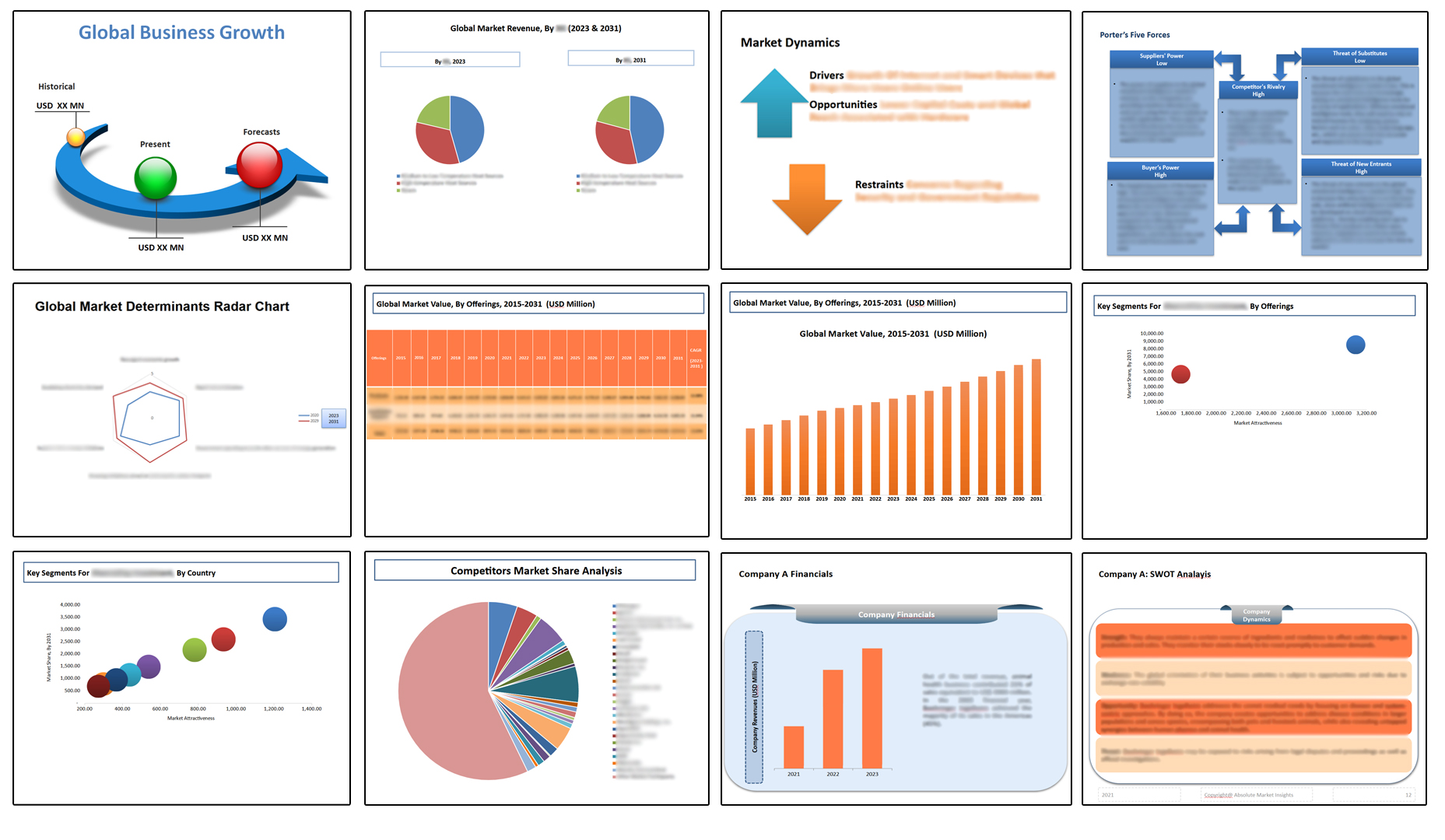
Table of Contents
Note: This ToC is tentative and can be changed according to the research study conducted during the course of report completion.
**Exclusive for Multi-User and Enterprise User.
Global Lab Grown Meat Market
By Source
- Poultry
- Beef
- Pork
- Seafood
- Others
By Application
- Burgers
- Sausages
- Meatballs
- Nuggets
- Hot Dogs
- Steak
- Others
By Distribution Channel
- Online
- Offline
- Hypermarket/Supermarket
- Restaurants
- Other
By Sales Channel
- B2B
- B2C
By Region
- North America (U.S., Canada, Mexico, Rest of North America)
- Europe (France, The UK, Spain, Germany, Italy, Nordic Countries (Denmark, Finland, Iceland, Sweden, Norway), Benelux Union (Belgium, The Netherlands, Luxembourg), Rest of Europe)
- Asia Pacific (China, Japan, India, New Zealand, Australia, South Korea, Southeast Asia (Indonesia, Thailand, Malaysia, Singapore, Rest of Southeast Asia), Rest of Asia Pacific)
- Middle East & Africa (Saudi Arabia, UAE, Egypt, Kuwait, South Africa, Rest of Middle East & Africa)
- Latin America (Brazil, Argentina, Rest of Latin America)
The Niche Research approach encompasses both primary and secondary research methods to provide comprehensive insights. While primary research is the cornerstone of our studies, we also incorporate secondary research sources such as company annual reports, premium industry databases, press releases, industry journals, and white papers.
Within our primary research, we actively engage with various industry stakeholders, conducting paid interviews and surveys. Our meticulous analysis extends to every market participant in major countries, allowing us to thoroughly examine their portfolios, calculate market shares, and segment revenues.
Our data collection primarily focuses on individual countries within our research scope, enabling us to estimate regional market sizes. Typically, we employ a bottom-up approach, meticulously tracking trends in different countries. We analyze growth drivers, constraints, technological innovations, and opportunities for each country, ultimately arriving at regional figures.Our process begins by examining the growth prospects of each country. Building upon these insights, we project growth and trends for the entire region. Finally, we utilize our proprietary model to refine estimations and forecasts.
Our data validation standards are integral to ensuring the reliability and accuracy of our research findings. Here’s a breakdown of our data validation processes and the stakeholders we engage with during our primary research:
- Supply Side Analysis: We initiate a supply side analysis by directly contacting market participants, through telephonic interviews and questionnaires containing both open-ended and close-ended questions. We gather information on their portfolios, segment revenues, developments, and growth strategies.
- Demand Side Analysis: To gain insights into adoption trends and consumer preferences, we reach out to target customers and users (non-vendors). This information forms a vital part of the qualitative analysis section of our reports, covering market dynamics, adoption trends, consumer behavior, spending patterns, and other related aspects.
- Consultant Insights: We tap into the expertise of our partner consultants from around the world to obtain their unique viewpoints and perspectives. Their insights contribute to a well-rounded understanding of the markets under investigation.
- In-House Validation: To ensure data accuracy and reliability, we conduct cross-validation of data points and information through our in-house team of consultants and utilize advanced data modeling tools for thorough verification.
The forecasts we provide are based on a comprehensive assessment of various factors, including:
- Market Trends and Past Performance (Last Five Years): We accurately analyze market trends and performance data from preceding five years to identify historical patterns and understand the market’s evolution.
- Historical Performance and Growth of Market Participants: We assess the historical performance and growth trajectories of key market participants. This analysis provides insights into the competitive landscape and individual company strategies.
- Market Determinants Impact Analysis (Next Eight Years): We conduct a rigorous analysis of the factors that are projected to influence the market over the next eight years. This includes assessing both internal and external determinants that can shape market dynamics.
- Drivers and Challenges for the Forecast Period:Identify the factors expected to drive market growth during the forecast period, as well as the challenges that the industry may face. This analysis aids in deriving an accurate growth rate projection.
- New Acquisitions, Collaborations, or Partnerships: We keep a close watch on any new acquisitions, collaborations, or partnerships within the industry. These developments can have a significant impact on market dynamics and competitiveness.
- Macro and Micro Factors Analysis:A thorough examination of both macro-level factors (e.g., economic trends, regulatory changes) and micro-level factors (e.g., technological advancements, consumer preferences) that may influence the market during the forecast period.
- End-User Sentiment Analysis: To understand the market from the end-user perspective, we conduct sentiment analysis. This involves assessing the sentiment, preferences, and feedback of the end-users, which can provide valuable insights into market trends.
- Perspective of Primary Participants: Insights gathered directly from primary research participants play a crucial role in shaping our forecasts. Their perspectives and experiences provide valuable qualitative data.
- Year-on-Year Growth Trend: We utilize a year-on-year growth trend based on historical market growth and expected future trends. This helps in formulating our growth projections, aligning them with the market’s historical performance.
Research process adopted by TNR involves multiple stages, including data collection, validation, quality checks, and presentation. It’s crucial that the data and information we provide add value to your existing market understanding and expertise. We have also established partnerships with business consulting, research, and survey organizations across regions and globally to collaborate on regional analysis and data validation, ensuring the highest level of accuracy and reliability in our reports.
